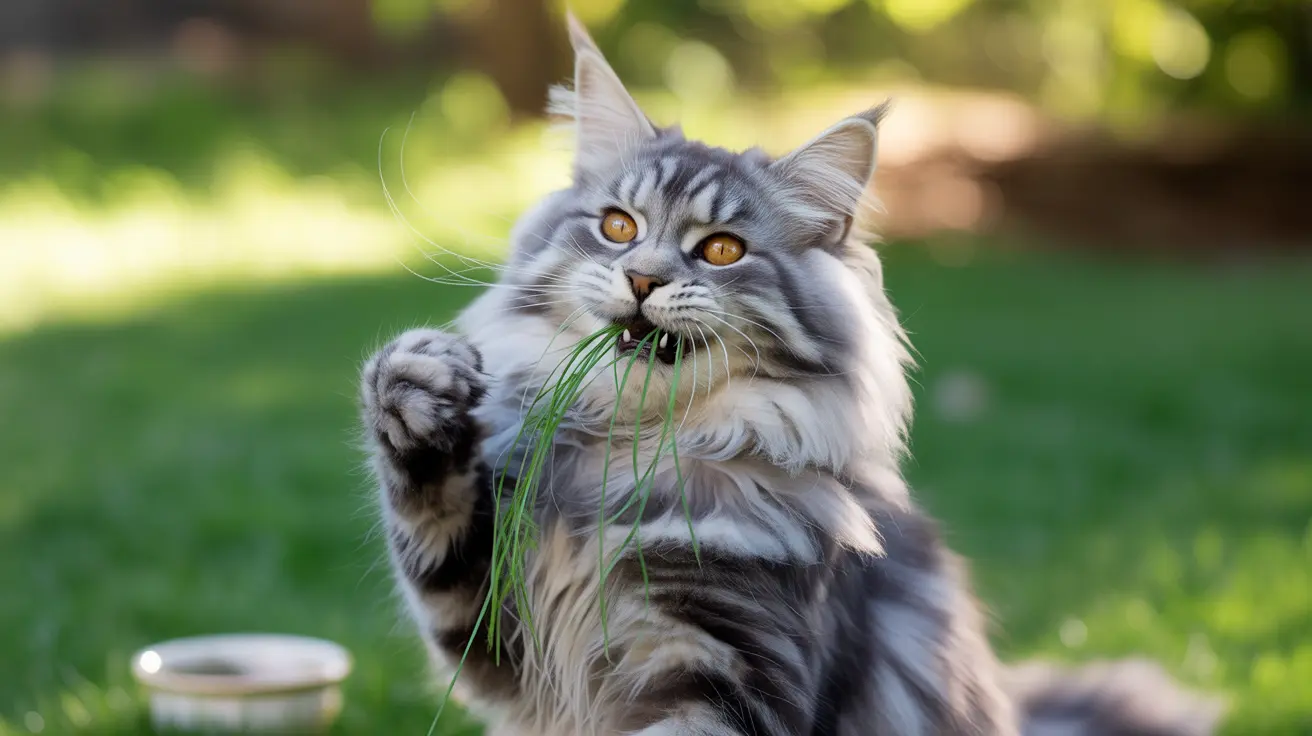Key Symptoms to Watch For
Several telltale signs indicate your cat may have grass stuck in their throat:
Immediate Physical Signs
- Persistent gagging or retching
- Frequent sneezing episodes
- Pawing at the mouth or nose
- Repeated swallowing motions
- Opening and closing the mouth frequently
Secondary Symptoms
- Nasal discharge (sometimes from one nostril only)
- Decreased appetite
- Unusual swallowing behavior
- Visible grass protruding from the nose or mouth
- Occasional vomiting attempts
Understanding Why Cats Eat Grass
Cats naturally gravitate toward eating grass for various reasons. Some experts believe it aids in digestion, while others suggest it helps eliminate hairballs. Whatever the reason, this behavior can sometimes lead to complications when grass becomes stuck.
Common Areas Where Grass Gets Lodged
Grass blades typically become trapped in several specific areas:
- Back of the throat (oropharynx)
- Nasal passages
- Behind the soft palate
- Between teeth or under the tongue
When to Seek Veterinary Care
Immediate veterinary attention is necessary if you observe:
- Difficulty breathing
- Blood in nasal discharge
- Excessive drooling
- Severe distress or agitation
- Prolonged gagging episodes
- Loss of appetite for more than 24 hours
Prevention Strategies
To minimize the risk of grass-related issues:
- Provide cat-safe grass alternatives like wheat grass
- Monitor outdoor activity during peak grass-growing seasons
- Remove potentially dangerous plant species from your yard
- Keep indoor plants out of reach
- Regular grooming to reduce hairball formation
Treatment Options
Treatment typically involves:
Professional Removal
- Veterinary examination under sedation
- Endoscopic removal when necessary
- Careful extraction using specialized tools
Post-Treatment Care
- Monitoring for infection
- Following prescribed medications
- Temporary diet modifications if needed
Frequently Asked Questions
What are the common symptoms that indicate a cat has grass stuck in its throat?
The most common symptoms include persistent gagging, frequent sneezing, pawing at the mouth or nose, excessive swallowing, and nasal discharge. Some cats may also show decreased appetite and visible distress.
How can I tell the difference between my cat gagging from grass and coughing due to other health issues?
Gagging from grass typically involves repeated swallowing motions and pawing at the mouth, while coughing is usually more rhythmic and may be accompanied by wheezing. Grass-related gagging often occurs suddenly after outdoor activity.
What should I do if I suspect my cat has a blade of grass lodged in its throat or nasal passages?
Monitor your cat closely and seek veterinary care if symptoms persist for more than a few hours. Don't attempt to remove the grass yourself, as this could cause further complications or injury.
How do veterinarians diagnose and remove grass blades stuck in a cat's throat?
Veterinarians typically perform a physical examination, sometimes under sedation, and may use specialized tools or endoscopy for visualization and removal. In some cases, imaging might be necessary to locate the grass.
What steps can I take to prevent my cat from getting grass or plant material stuck in its throat?
Provide safe alternatives like cat grass, supervise outdoor time, remove dangerous plants from your yard, and consider creating an enclosed outdoor space with cat-safe vegetation.
Remember, while eating grass is normal behavior for cats, being vigilant about symptoms of stuck grass can help prevent serious complications. When in doubt, always consult with your veterinarian for professional guidance and treatment.






